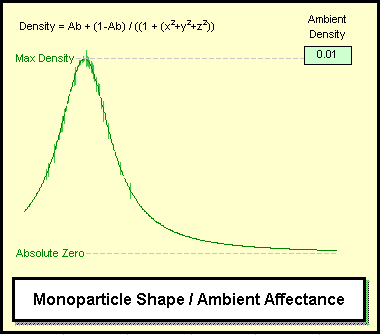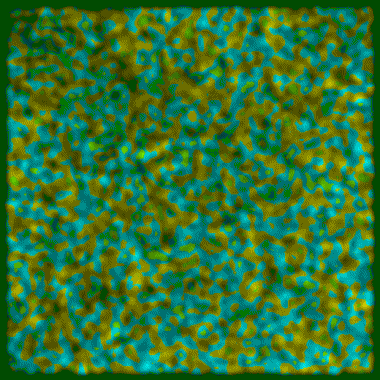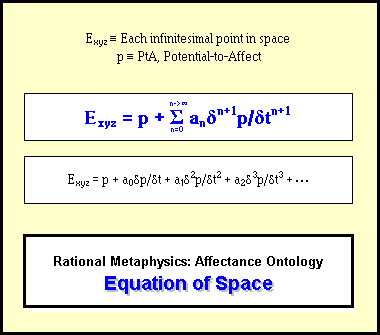She seems to be referring to (although perhaps not realizing it) how much physicists have become nothing but mathematicians lacking any clue as to what the equations are physically referencing. That is a pretty well known issue and I can verify that it is a real issue.
In addition, she gives me the impression that she never caught onto the fact that the equations really do have physical references even though the typical physicist has never really thought about it. Physicists are technicians. They don’t design the ontology they follow. And more recently, the efforts of certain ontology designers have built an ontology of strictly mathematics (such as Quantum Physics).
Every proposed architecture of truth is an ontology. Every time you ask if something is real, you are actually asking if the ontology mentioned fits experience. All truth from all sources is in the form of one ontology or another (too often mixed yet not matched). An ontology is merely a concept language. There can be many. Usually none of them entirely match reality, but ideally they could and several different ontologies could all match reality even though they are different, much like a truth being spoken in many languages…
For example, I designed “Affectance Ontology” (as we are discussing) and Fixed Cross came up with “Value Ontology”. Both describe the make of the universe in their own way. It is possible for both of them to be 100% accurate. Although I could never get FC to precisely define his ontological elements well enough for everything to be verifiable. My Rational Metaphysics requires that any ontological proposal be very well defined, logically consistent throughout, completely comprehensive, and relevant to its use. I ensured that RM:AO met that standard.
So how much of the noise theory is derived directly from equations, and how much of it can be observed?
The affectance noise part of the ontology is pure logic, very little math is required (math being a subset of logic). The simple fact is that no universe can possibly exist (nor any space within any universe) that is void of affectance. It is simply logically impossible (as I have explained in detail many times).
And if/when it is observed, what does it count as. Points of radiating light? Is the animated image you posted what this noise looks like, or is it a mathematical graph representation of a theoretical process that cannot be observed?
If you are referring to this pic;

That is a graph of the affectance density associated with a sub-atomic particle, such as an electron. You could think of it as a cross sectional view. The fundamental mass/energy density graph (at the start of the anime) is old science and confirmed long ago. My contribution to the form is merely the degree of added mass/energy being automatically accumulated due to the surrounding field being increased. It directly implies that when an electron gets closer to a large mass (such as the Earth), it actually increases slightly in mass itself. As far as I know, science has not verified that fact yet. I can and have deduced that there is no option. It must occur, but RM also requires verification and open debate. That particular concern is probably not greatly relevant until extreme precision in either performance or understanding it required.
As far as what affectance “looks like”, it looks exactly like what you see all around you. You are looking at it already. In fact, you can see nothing but affectance in its variety of densities. But if you could perceive electromagnetic waves on an extremely minuscule level (which you cannot), any tiny bit of so called “empty” space would probably look something like this;

That is perhaps 0.001 nanometers of “empty” space.
And the following is an actual emulation (not simulation) of a particle forming due to the affectance density being too high when I inject a very small “mass-seed” (meaning the most fundamental beginning of a mass particle). I have to place that seed into the center of the metaspace else the particle will form out of view. And in real space, such particles don’t normally form except within a very dense mass such as a star. In “dark matter” regions in space, perhaps such particles spontaneously emerge (possibly near black holes as well). I’m not an astronomer, so I can’t really verify that kind of speculation.

Although you can’t tell with that emulation, the particle stabilizes at that end size. Each frame on that anime took several minutes to process with my little PC, so I couldn’t make the emulation as long as I would like, nor as complex as I would like to demonstrate other principles.
What are the phenomenological properties of this fundamental noise?
Well, none of it is a “phenomenon” to me, so I’m not certain what you are asking. Affectance can be mathematically described as “affectance oblates” or what I call “afflates” for short. An afflate is what is called a “virtual particle” in that it isn’t really a hard particle, but rather merely a chosen small portion of the substance that is treated as if it is a particle in that it retains its form during emulations. Those emulations, and many others, use a randomly sized, charged, and density afflates (a tiny spec of affectance) as elements in a 3D array (usually from 20,000 to 300,000 of them to fill the metaspace chamber).
The afflates (tiny bits of affectance a thousand times smaller than an electron) behave and interact much the same as what you think of as light photons with the exception that an afflate always has a degree of potential (“electrical charge”) and is a million times small than a typical photon (a photon is made of millions of afflates). They interact as logic dictates concerning change rates and change densities. There is a maximum change rate, MCR, issue that results in causing what science refers to as “inertia” and consequentially “mass particles”. And there is also a maximum change density (“mass density”), MCD, issue that causes stability in sizes.
Affectance is the changing, of the changing. And that is the make of your universe.

Every point in space can be described as the integral sum of all changes that are taking place in said spot. That is a logically necessarily true statement. As it turns out, such changing, the affectance, is all there is to all space and everything in it. That equation is true for literally every point, location, throughout the entire universe, whether occupied by any object or not.
What you call “objects” are hard to the touch merely because the changing in side of them is changing as fast as physically possible already, so when you go to move an object, you are trying to add further changing to something that is already changing as maximum speed, thus your change just has to wait its turn. You feel the resistance, known as “inertia” or “hardness”.